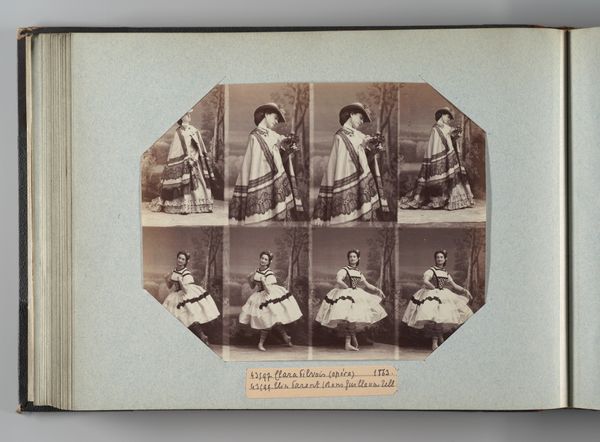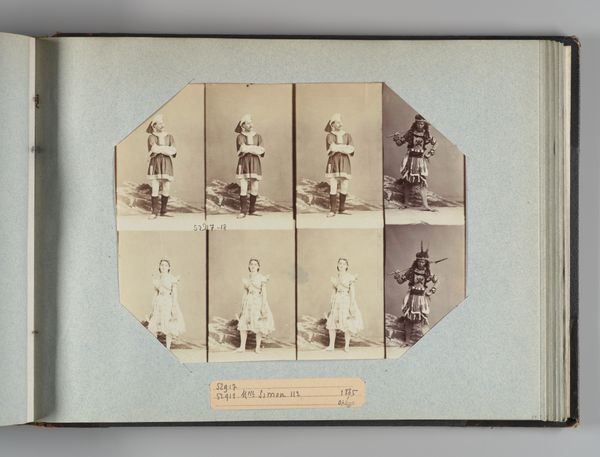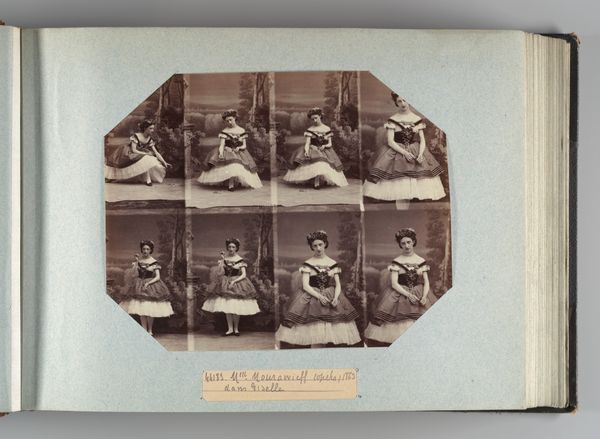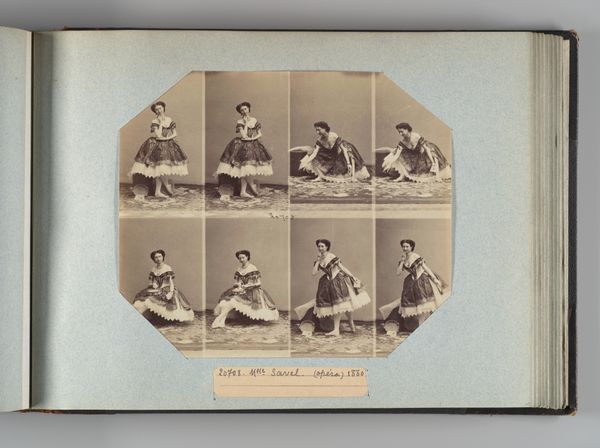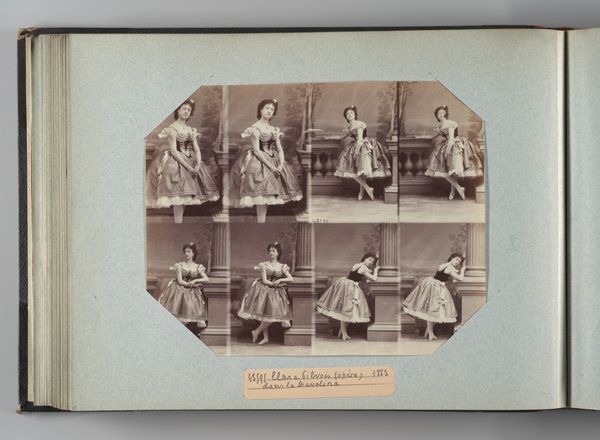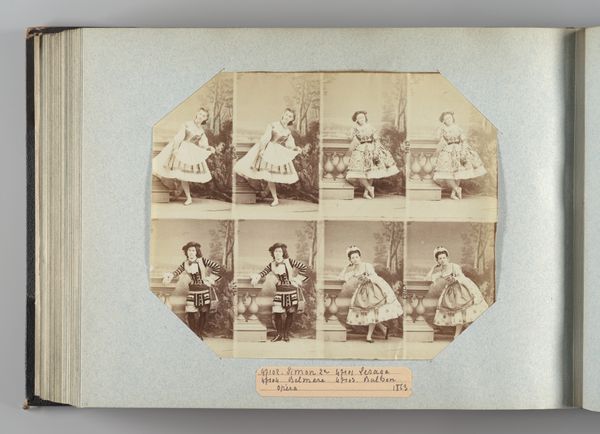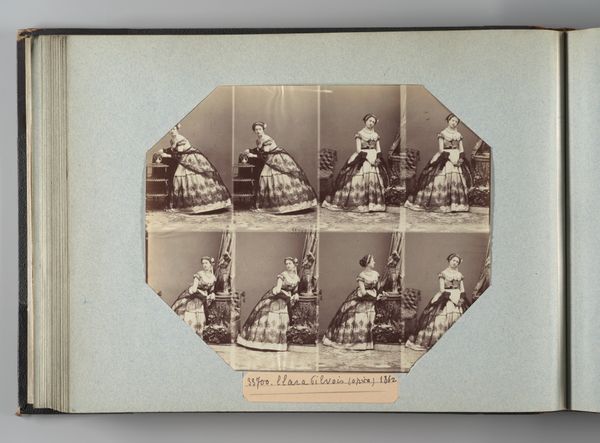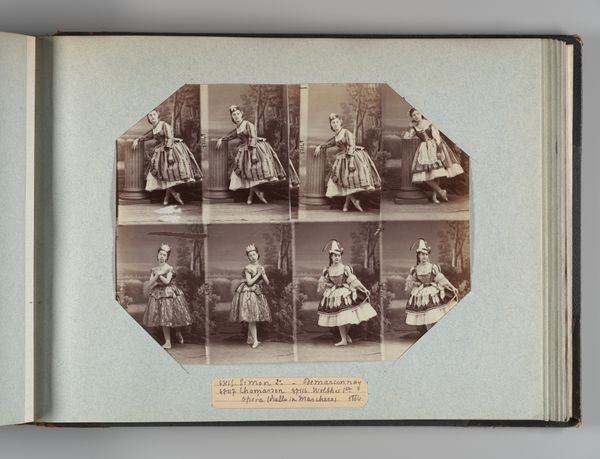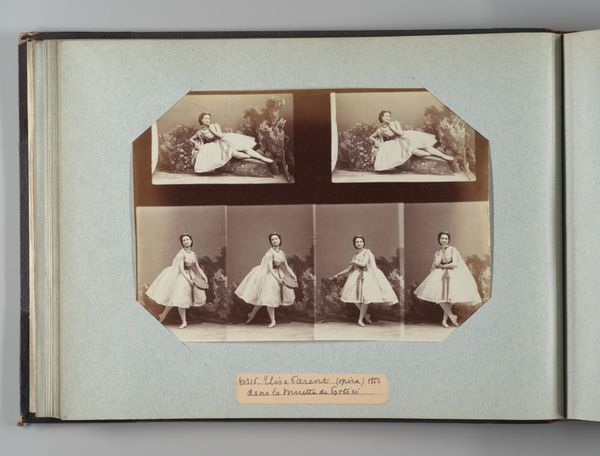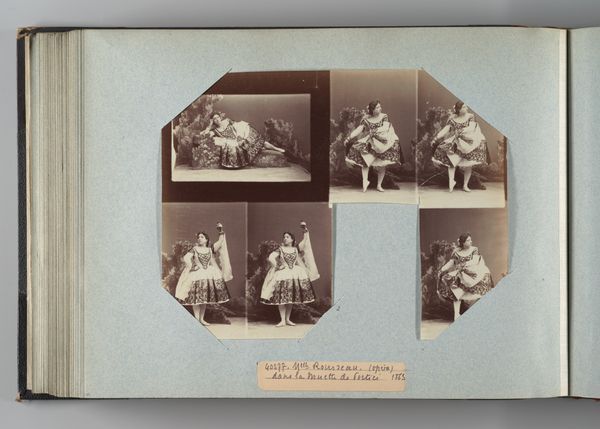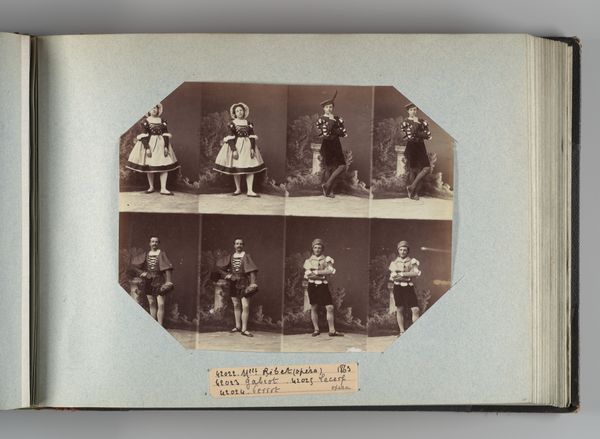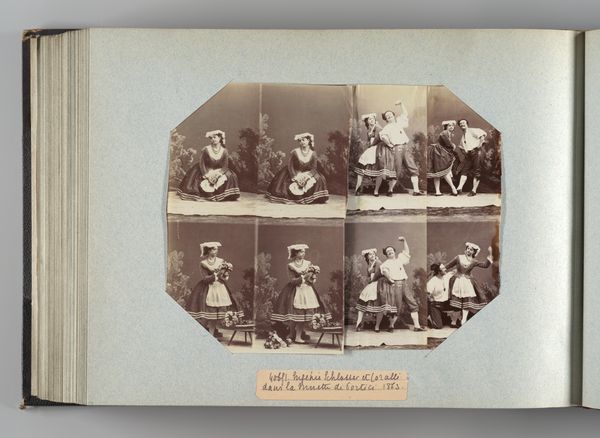
Mlle Mourawieff; Melle Mourawieff et Aline dans Giselle 1863
0:00
0:00
performance, photography, albumen-print
#
portrait
#
performance
#
photography
#
academic-art
#
albumen-print
Dimensions: Image: 7 3/8 × 9 1/4 in. (18.8 × 23.5 cm) Album page: 10 3/8 × 13 3/4 in. (26.3 × 35 cm)
Copyright: Public Domain
Curator: This albumen print from 1863, attributed to André-Adolphe-Eugène Disdéri, captures "Mlle Mourawieff; Melle Mourawieff et Aline dans Giselle." It's currently held at the Metropolitan Museum of Art. What strikes you most when you see this? Editor: There's something a bit haunting about it, like a series of spectral echoes. The dancer, posed repeatedly, creates a strange, multiplied presence. It's almost unsettling. Curator: Disdéri was known for popularizing the carte de visite, and this seems to be a precursor or perhaps a related experiment, right? Each panel shows a different moment or pose within the ballet. It's like a proto-cinematic strip, breaking down movement. Consider ballet, often associated with hyper-femininity and its ties to empire, class, and nation in mid-19th-century France. These composite portraits provided affordances for how identities, like femininity or occupation, were visually coded and understood. Editor: Precisely! And by distributing these portraits widely, Disdéri was also playing with ideas of accessibility and celebrity. It begs the question: Who could afford to both attend the ballet *and* purchase these photographs? Curator: Definitely a limited demographic! Access to this kind of high culture was closely tied to class. Consider how it presents the ballet. What do you notice about the presentation of the dancers? The backgrounds look very similar across the series. It makes you wonder if we are capturing different scenes of a stage. Editor: Absolutely. The backgrounds look like standard backdrops of the period - classical statues amidst vaguely romanticized landscapes. Almost generic. What this piece highlights, perhaps unintentionally, is the commodification of artistry and performance. These dancers are frozen, replicated, reduced to collectible images divorced from the living, breathing experience of ballet itself. This speaks to broader socio-economic shifts in mid-19th-century France. Curator: A fitting point. Ultimately, Disdéri offers us a glimpse into a specific moment where performance, identity, class, and burgeoning photographic technologies converged. Editor: I agree. It makes one consider how visual culture can shape and reflect society’s values.
Comments
No comments
Be the first to comment and join the conversation on the ultimate creative platform.
